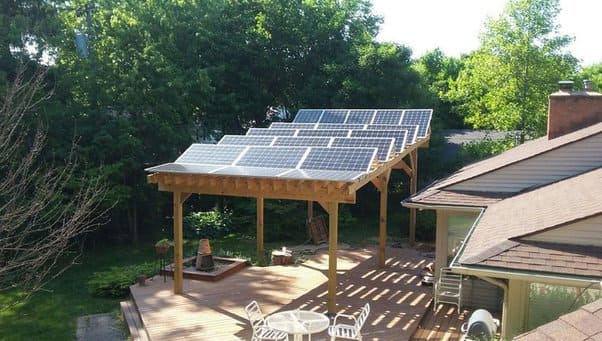In the evolving world of renewable energy, the integration of solar panels into various architectural structures has become a forefront solution for achieving energy efficiency and sustainability. Among these innovative adaptations, incorporating solar panels into shed roof designs is not only practical but also increasingly popular. This comprehensive guide explores the intricacies and benefits of outfitting your shed with solar panels, ensuring that every homeowner or builder can make informed decisions and maximize the potential of their property.
Understanding the Basics of Solar Panel Installation on Shed Roofs
Before diving into the installation process, it is crucial to understand the fundamentals of solar technology and how it can be seamlessly integrated into a shed roof. Solar panels, or photovoltaic (PV) systems, convert sunlight directly into electricity. For sheds, which often serve as auxiliary buildings, the addition of solar panels can provide ample power for both the shed’s needs and contribute excess energy back to the main household or grid.
Evaluating Shed Roof Suitability for Solar Panels
The first step in integrating solar panels is assessing the suitability of the shed’s roof. Factors to consider include:
- Roof Orientation and Tilt: The ideal orientation is usually south-facing in the northern hemisphere to capture maximum sunlight. The tilt of the roof also affects the solar panel’s efficiency.
- Roof Material and Strength: Not all shed roofs are created equal. Materials like metal, tiles, or reinforced shingles are best for supporting the weight of solar panels. Additionally, the roof should be structurally sound to bear the extra load.
- Shading: Sheds often situated under trees or alongside taller buildings might be heavily shaded and unsuitable for solar panels without some adjustments.
Selecting the Right Solar Panels for Your Shed
Once the roof’s compatibility is confirmed, selecting the appropriate solar panels is paramount. There are several types of solar panels to choose from:
- Monocrystalline Silicon Panels: Known for their efficiency and longevity, these panels are ideal for roofs with limited space.
- Polycrystalline Silicon Panels: These are cost-effective and perform well in a variety of lighting conditions.
- Thin-Film Solar Panels: Flexible and lightweight, these panels can be a good option for sheds with less structural strength.
Installation Process
Installing solar panels involves several key steps:
- Site Survey: Conducted by a professional, this survey ensures all factors such as roof angle, orientation, and structural integrity are suitable.
- System Design: Tailored to your specific needs, this includes determining the layout and wiring of the panels.
- Mounting the Panels: Using frames and brackets, the panels are securely mounted to the roof.
- Electrical Connections: Wiring the panels to an inverter that converts the generated DC electricity into AC, compatible with home and grid use.
- Inspection and Testing: Before the system goes live, it must be inspected and approved by local building authorities and tested to ensure it operates correctly.
Benefits of Solar-Powered Sheds
Integrating solar panels into your shed’s roof design brings numerous benefits:
- Reduced Energy Costs: Solar panels significantly reduce the energy bills by generating free electricity throughout the year.
- Increased Property Value: Homes with solar power systems have higher market values and appeal more to prospective buyers.
- Environmental Impact: Solar energy is clean, renewable, and reduces carbon footprint, contributing to a healthier environment.
- Utility Independence: Reduce reliance on the grid, particularly valuable during power outages or peak demand times.
Maintenance and Care
Maintaining solar panels is relatively straightforward. Regular cleaning and inspections will ensure they perform optimally. Most solar panels come with a warranty of 20-25 years, underlining their durability and long-term reliability.
Conclusion
The integration of solar panels into shed roofs is a smart, sustainable investment for any homeowner. Not only does it provide a practical use of unused roof space, but it also contributes to energy savings and environmental sustainability. As solar technology continues to evolve and become more cost-effective, the integration into shed designs is likely to become even more popular, offering an excellent return on investment.


